To make pink from paints, you will need 2 or more ingredients to mix. Pink is made from a red pigment and a lightening agent, which is most often white or water for water-soluble paints. Sometimes a small amount of additional dye is added to this mixture to achieve the saturation or tone of the pink.
Mixing paints to obtain pink color in case the desired color in the palette has run out or a specific shade is needed. Mixing almost always occurs according to the same scheme, but may have its own characteristics for different types of dyes.
Characteristics and shades
You can make pink by mixing 2 types of paint, red and pink, to which you then add additional colors in small quantities, which affect the shade.
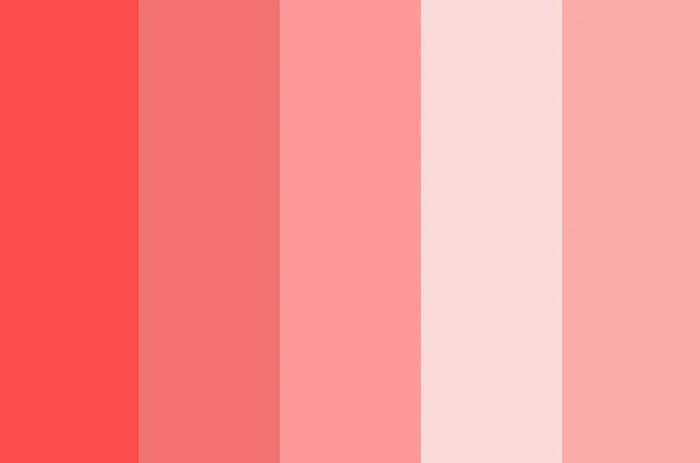
In psychology, it is believed that pink is associated with positive emotions, tenderness, innocence, or children. Pink is associated with symbols of love and beauty. In the modern world, many women's or children's products for girls are found in pink.
In optics, pink is not considered an independent color. It appears as an overlay of a red or violet wave on white. In total, over 150 shades of pink with different tints are distinguished today, many of which are also found in the wild (bird feathers, plant petals, shells, optical phenomena in the sky).
There are not many shades of pink in their pure form; they are included in the basic color palettes of paints, but by mixing them with additional dyes, you can get many new tones.
There are several basic shades of pink.
| Name | How to get |
| Pink | Mix white and red in equal proportions. |
| Light pink | Mix white and red in a 2:1 ratio. |
| Hot pink | Mix 1 part white and 1 part blue, dilute the mixture with white. |
| Deep pink | Mix white, red and yellow in the proportion 2:1:0.5. |
| Medium pink | Mix brown, orange and green in equal proportions. |
| Dusty pink | Mix pink with gray. |
Mixing rules
You can make pink from different types of paints by mechanical mixing on a palette. In this case, the mixing time may vary if you use thick and oil paints, which require more thorough mixing.
The mixing scheme includes the following steps.
- Red paint is applied to the palette.
- White paint is applied nearby.
- Little by little I start mixing both dyes with a stick and stir until smooth. The dyes are combined in portions so as not to spoil the mixture.
- Once you have the basic pink tone, add a small amount of additional paints to create a new shade.
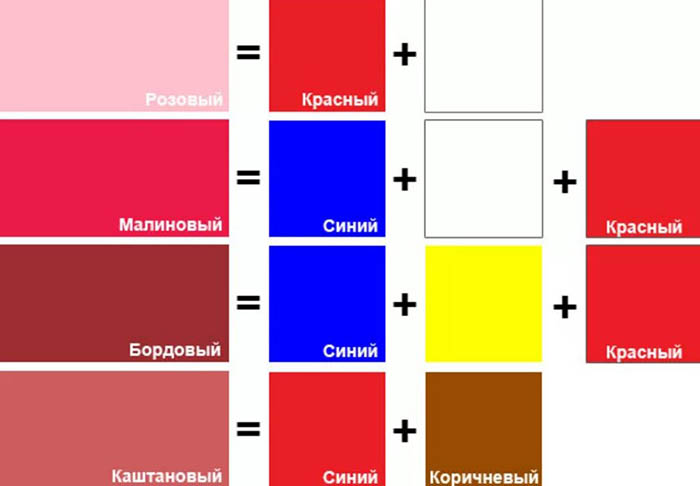
Follow the rules of mixing paints so that the process takes less time and the result is obtained the first time.
- The amount of each dye depends on the desired tone, so several mixtures are tried on a rough copy.
- Different paints are applied to the palette with different brushes, so as not to mix the pigments in the jars or pans. If one brush is used, it is thoroughly washed after each dye.
- It is recommended to use a white palette to see the exact shade of paint mixtures.
- The finished paint mixture is tested on a rough copy and the brushstroke is left to dry – many paints lose their saturation when they dry.
- Mix paint colors of only one type (for example, only watercolors or only oils).
- The original red color can influence the final shade of pink.
- Warm shades of pink are obtained by adding yellow and orange colors.
- Pastel colors are obtained by adding a drop of blue to yellow.
- Blue and violet paint are added carefully so that the pink does not turn out too dark. These colors make the tone cold, rich and dark.
- Brown makes a clay-like pink.
- The smoky effect is achieved by mixing pink tones with gray.
From the primary colors
The easiest way to make pink from paints is to combine red with white. A more saturated pink from water-soluble paints is made by diluting red with water and adding a little white to it. The saturation and temperature of the finished shade depends on the amount of white dye.
Classical
Classic pink is obtained by mixing equal parts white and red. Another option is to mix red, a little white and a drop of blue.
Dark pink
There are many shades of dark pink, each made by mixing primary and secondary colors in different proportions.
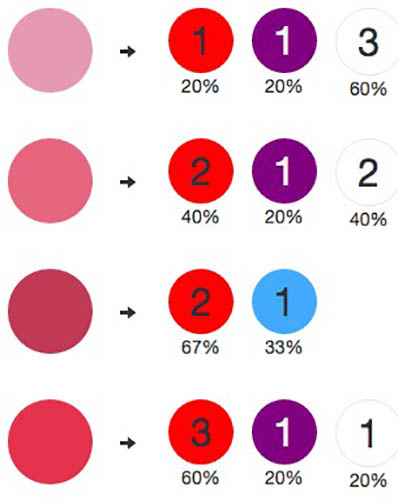
You can use a ready-made color mixing scheme or experiment on your own to get the desired shade.
- Mix dark red with yellow and white in equal proportions. Add a dash of blue dye to the mixture. The result is a dark pink with a grayish tint. If a darker shade is needed, add a little more red or blue.
- Combine classic pink with blue and red. Adjust the number of additional colors at your discretion.
- Mix white and red in equal proportions, add a little blue and stir until smooth. If necessary, add a little more white to adjust the saturation.
- Mix standard pink with a drop of black.
- Instead of combining blue and red, use the ready-made original carmine dye and mix it with white to obtain a purer dark pink shade.
Light pink
Most light shades of pink are created by adding white dye in varying amounts.
Too much white in the mixture helps to obtain light and cool shades of pink.
- The combination of carmine and white in a ratio of 1:2 allows you to get a pure warm pink shade.
- A softer shade with a warm undertone is obtained by mixing dark red with white.
- An additional warm tone is added to the light pink tone with a small amount of yellow.
Bright
Brightness of the pink shade is added with a small amount of yellow, violet or blue. The original color is not red, but carmine. If you mix watercolors, then a little sugar is added to the water to make the shade even more saturated.
From paints and materials of different types
You can make pink from paints only by using dyes of the same base. For example, watercolor paints are not mixed with oil paints, since different textures and thicknesses will not give the desired result and the mixture will be semi-liquid, with streaks and inclusions. Each type of paint has its own nuances in the mixing process.
Some paints can only be mixed mechanically, by stirring them in a container by hand. Others can be layered using special techniques or by using an optical illusion method, where the colors are simply placed close to each other.
Gouache
It is easy to achieve pink gouache, these paints are easy to mix in pure form or with water. Gouache dries quickly, does not have a strong smell, and is suitable for most decorative works. Pink gouache is mixed when there is no necessary shade or it has run out in a ready-made set of paints.
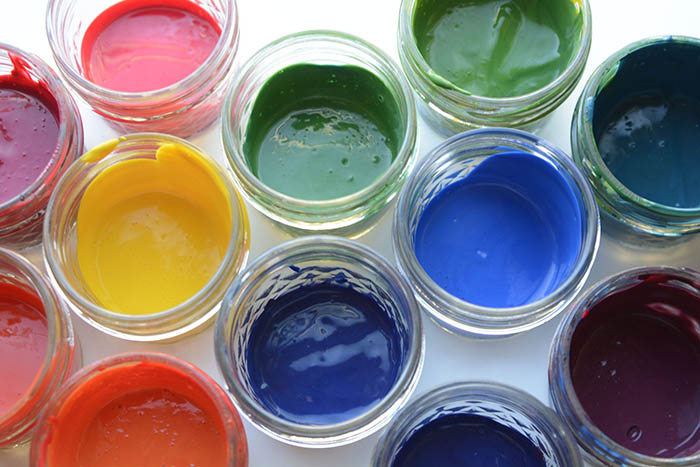
The process of mixing gouache includes the following steps.
- Prepare the necessary tools for mixing: paints, palette, brushes, draft and a container with water. It is recommended to work with gouache using soft semi-circular brushes. The palette or surface for mixing paints is chosen white to track the change in shade. If gouache is used to paint paper, then sheets with a rough surface are chosen.
- The brush is dipped in water, then in paint. If you work with one brush, then wash it each time after working with different paints. If the gouache has dried, dilute it to the desired state with water, stir with a stick.
- First, apply red paint to the palette. Then a small amount of white paint and gradually mix them on the palette in the right proportion, which may change due to the thickness of the dye.
- Gouache is lightened by adding white paint or water. Try not to mix too much white paint, as it makes the tone too cold. Adding water reduces the saturation of the mixture by 1-2 tones.
- Darken the mixture by adding a drop of black, blue or violet. These colors absorb the tone, so use them with caution.
- Additional colors are added in small quantities to achieve the desired shade of pink. Try not to mix more than 3 colors so that the finished color does not have a dirty undertone.
- A color test is made - a stroke is applied to the draft and it is left to dry. Afterwards, the saturation of the stroke and the mixture of colors is compared. If necessary, the necessary colors are added.
- When the desired shade is obtained, they begin painting. Gouache is applied with vertical, then horizontal strokes, without waiting for the layers to dry. If the previous layer was unsuccessful, the new layer can cover it, if the paint was not diluted with water too much.
Acrylic paints
You can make pink from acrylic paints yourself by mixing red and white or other colors. Acrylic paints are considered a universal bright dye that is suitable for most decorative works.

There are shades of pink on sale that are included in ready-made paint sets or in separate jars or tubes. If the desired shade is not in the set or has run out, mix the paints.
This process occurs as follows.
- A little red paint is applied to the palette.
- Add a little more white. Mix both dyes thoroughly until smooth and a uniform pink color. If necessary, add a little of the desired color.
- Lighten the mixture by adding more white paint. Try not to mix too much white, otherwise the color will turn out cold.
- If you want to darken the color, add a little red, purple or blue.
- A color test is made on a rough copy and compared with the paint mixture when the stroke dries. If necessary, a little paint is added.
- Once the desired color is obtained, painting begins.
Watercolor
Pink color from watercolor paints is obtained by glazing, mixing paints with water directly on paper or by mixing on a palette. Using the second method, you can achieve more complex shades of pink.
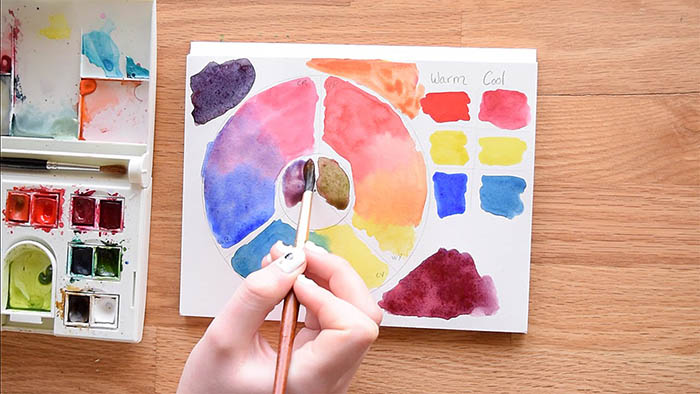
This method is suitable for beginners:
- Prepare paints, a white palette, paper, and a container of water.
- The brush is dipped in water, then in paint. After each new paint, the brush is thoroughly washed in water, so it is better to take a container with water of a large volume.
- Apply red or carmine to the palette. Then begin adding white paint and immediately stir thoroughly. Continue adding white until the desired tone is achieved.
- If necessary, add additional colors, but try not to mix more than 3-4 colors at a time.
- Check the finished tone on paper so that it does not lose its saturation after drying. If necessary, add more of the required paint. Then start painting when the desired shade has been achieved.
Oil paints
Achieving a pink hue by mixing oil paints is mechanically more difficult than with other dyes due to their thick consistency. Red and white paint are mixed on a palette with a brush or a special stick for a long time until completely homogeneous. Once an even pink color is achieved, a few additional colors are added to give the shade saturation or pallor.
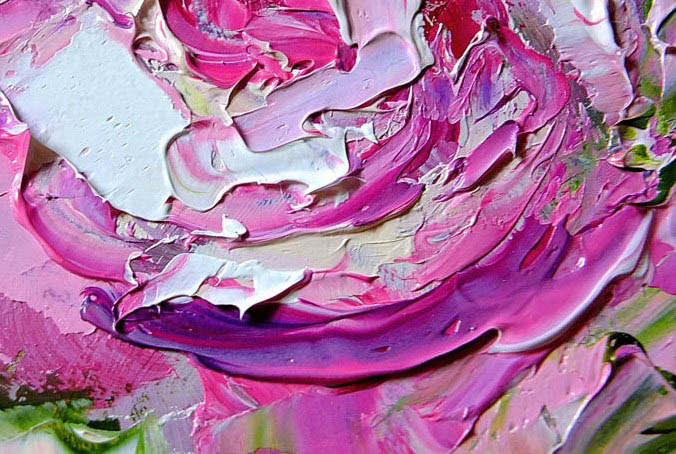
There are other ways to obtain pink tones with oil paints, in which the dyes are not mixed. The paints are applied directly to the canvas in an even layer on top of each other or at a close distance to each other. These methods are suitable for those who have mastered glazing methods of mixing paints.
Pencils
It is impossible to obtain a pure color by mixing pencil colors because of the wax included in the composition, which prevents the pigments from mixing.
Artists use stroke-overlay techniques to achieve an optical blending effect from the component colors:
- They do shading, alternating the necessary colors. All strokes are done with a little pressure and in one direction.
- They alternate the shading, placing each new color across the other.
- Close shading is done by drawing each line close to a different color.
- Mix colors by drawing a close dot with compound colors. This method paints over the entire required space.
When mixing colors, use pencils of only one type. The order of shading colors can affect the tone of the finished color. It is recommended to start with the lightest color, moving to a darker one. If necessary, repeat all rows. When the desired shade is achieved, the color is smoothed with a finger, eraser or piece of paper.
Plasticine
Plasticine can be mixed, like other dyes, to create new colors.
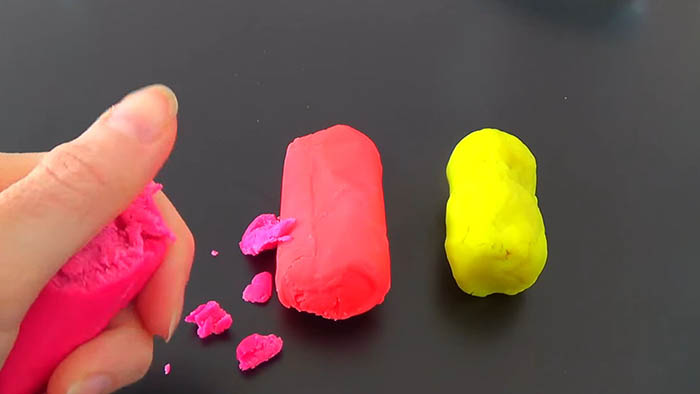
The process takes longer due to the thick consistency of the mass.
- Warm up a mass of white plasticine in your hands.
- They begin to add pieces of red plasticine.
- Mix the colors until smooth, constantly adding the mixture.
Felt-tip pens
To make pink from marker paints, mix red and zero marker. Instead of red, you can use fuchsia, violet or purple, lightening them with zero marker. Markers are applied to each other in circular motions, without waiting for drying. Do not combine more than 3 colors at a time.
Video about color mixing
How to get different shades of pink from paints:
